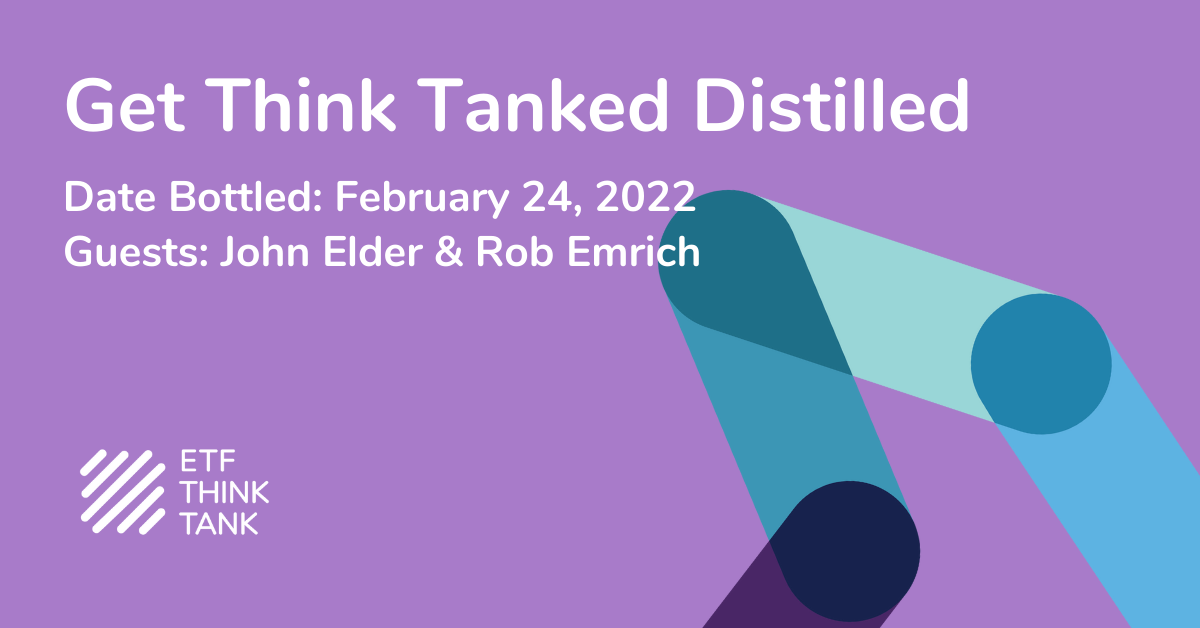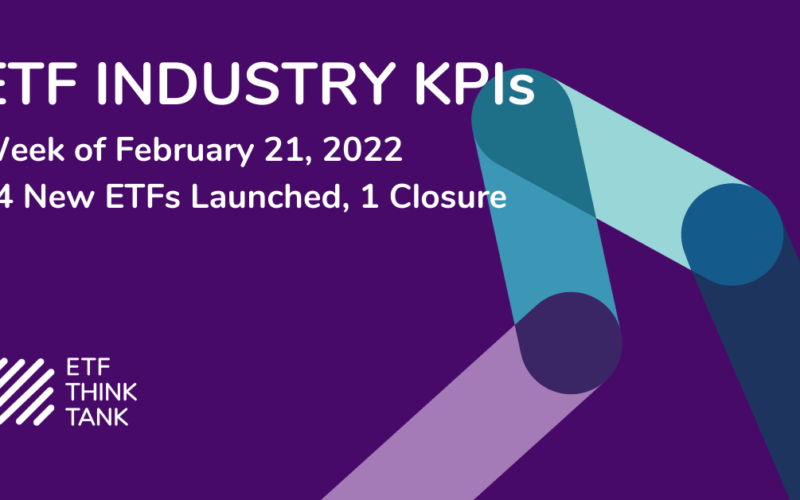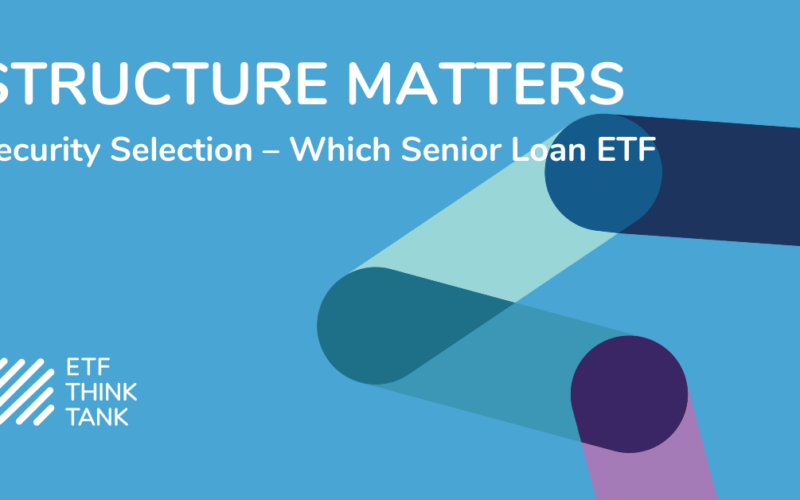With several market sectors correcting by more than 10% this year, volatility has become an issue that investors are being forced to face for the first time in a while. A number of ETFs exist that offer downside mitigation and risk hedges, including one from Rob Emrich’s Acruence Capital, which offers the Acruence Active Hedge U.S. Equity ETF (ticker: XVOL). He and his strategic partner, John Elder, the founder of data science firm, Elder Research, join the ETF Think Tank to discuss risk strategies and the proper way to execute them.
How does data science work exactly? Elder explains that it involves learning from the past something that can be useful for the future. His group uses domain knowledge to figure out what the important factors are and find other periods in time that are like it. There are several challenges in developing models properly. This biggest issue is what if the future is not like the past. The pandemic offers a good example of that. Researchers also need to identify what works without disregarding what didn’t work. You can learn, but you can also overlearn.
XVOL begins with a core position in the S&P 500 and uses a proprietary, volatility-based algorithm to determine the number of VIX options contracts to purchase, as well as the strike price(s) and expiration date(s) of the options. Emrich partnered with Elder to develop this algorithm, who studied the VIX to find opportunities, but also determine whether or not the program could fail and the algorithm could be broken.
Elder found that with the VIX, the curve is unusual and not very smooth. If your inputs are similar, you hope that your outputs are similar, but in order to be successful, it really just needs to be in the right direction. He notes that models can be fooled if you simulate a lot of scenarios and just pick the best and you need to run a lot of alternate histories to see if your strategy would get fooled by those histories. Emrich adds that there’s not as much signal in surface volatility as you might think.
While most ETFs are based on the premise of a quality back test, Elder says he never trusts a back test until he has run one himself. He only deals with something that can be replicated 100%. He’s seen clients push ahead with models that couldn’t be adequately replicated and watched them crash because the client was manipulating the older data. Individuals need to be honest in developing models and always use 100% clean data.
Other key takeaways:
- Emrich says that he’s seen a lot of tail risk strategies that are currently being implemented but doesn’t think a lot of them are terribly successful. A lot of marketers develop stuff that looks cool, but it’s never been tested in a real environment. A lot of the products that exist today are just built in a marketing machine and that’s one of the marketplace’s biggest weaknesses.
- With XVOL, Emrich says that his fund uses a fixed dollar hedge, not a fixed notional hedge. This helps him better understand how much capital could bleed over the next year. As he looks at the curve and decides how much he wants to pay for VIX exposure, it can sometimes affect how much exposure he can layer on. Tails are becoming more expensive, and more people are using the VIX to hedge.
- Emrich says some current hedge vehicles are good, but they’re not S&P 500 replacements. If you’re going to replace your core position with a 15% hedge, that’s going to degrade your portfolio principal significantly over, say, 5 years. He wanted to develop a product that could outperform the S&P 500. If one of these tail events occurs once every 10 years, we can pick up a lot of return that benefits the fund over the long-term.
Disclosure
You should consider the fund’s investment objectives, risks, and charges and expenses carefully before you invest. The fund’s prospectus or summary prospectus, which can be obtained by calling 1-833-653-6400, contains this and other information about the fund, and should be read carefully before investing.
The fund is distributed by Foreside Fund Services, LLC.
The S&P 500® Index is composed of 500 selected common stocks most of which are listed on the New York Stock Exchange. It is not an investment product available for purchase. The Chicago Board Options Exchange (“CBOE”) Volatility Index (The “VIX” Index) estimates the expected level of volatility in the U.S. stock market, as reflected by the S&P 500, forward-looking over 30 days. It is not possible to invest directly in an Index.
All investments involve risk, including possible loss of principal.
The material provided here is for informational purposes only and should not be considered an individualized recommendation or personalized investment advice. The investment strategies mentioned here may not be suitable for everyone. Each investor needs to review an investment strategy for his or her own particular situation before making any investment decision.
All expressions of opinion are subject to change without notice in reaction to shifting market conditions. Data contained herein from third party providers is obtained from what are considered reliable sources. However, its accuracy, completeness or reliability cannot be guaranteed.
Examples provided are for illustrative purposes only and not intended to be reflective of results you can expect to achieve.
Exchange Traded Funds (ETFs) are bought and sold through exchange trading at market price (not NAV) and are not individually redeemed from the fund. Shares may trade at a premium or discount to their NAV in the secondary market. Brokerage commissions will reduce returns. Investments involve risk including the possible loss of principal. There is no guarantee the investment objective will be successful. Options can be volatile and have a large impact on the performance of the Fund. There is a risk of loss of all or part of the cash paid (premium) for purchasing options and the value of the option may be lost if not exercised at or prior to expiration. One of the primary drivers of the value of a VIX Option is movement in the spot value of the VIX Index, which is a measure of implied volatility of S&P 500 options. Therefore, changing market expectations of future volatility will lead to changes in the market value of VIX Options. Because implied volatilities often rise during periods of market stress, the VIX Index is often negatively correlated to equity markets.
The value of investments and the income from them can go down as well as up and investors may not get back the amounts originally invested, and can be affected by changes in interest rates, in exchange rates, general market conditions, political, social and economic developments and other variable factors. Investment involves risks including but not limited to, possible delays in payments and loss of income or capital. Neither Toroso nor any of its affiliates guarantees any rate of return or the return of capital invested. This commentary material is available for informational purposes only and nothing herein constitutes an offer to sell or a solicitation of an offer to buy any security and nothing herein should be construed as such. All investment strategies and investments involve risk of loss, including the possible loss of all amounts invested, and nothing herein should be construed as a guarantee of any specific outcome or profit. While we have gathered the information presented herein from sources that we believe to be reliable, we cannot guarantee the accuracy or completeness of the information presented and the information presented should not be relied upon as such. Any opinions expressed herein are our opinions and are current only as of the date of distribution, and are subject to change without notice. We disclaim any obligation to provide revised opinions in the event of changed circumstances.
The information in this material is confidential and proprietary and may not be used other than by the intended user. Neither Toroso or its affiliates or any of their officers or employees of Toroso accepts any liability whatsoever for any loss arising from any use of this material or its contents. This material may not be reproduced, distributed or published without prior written permission from Toroso. Distribution of this material may be restricted in certain jurisdictions. Any persons coming into possession of this material should seek advice for details of and observe such restrictions (if any).












